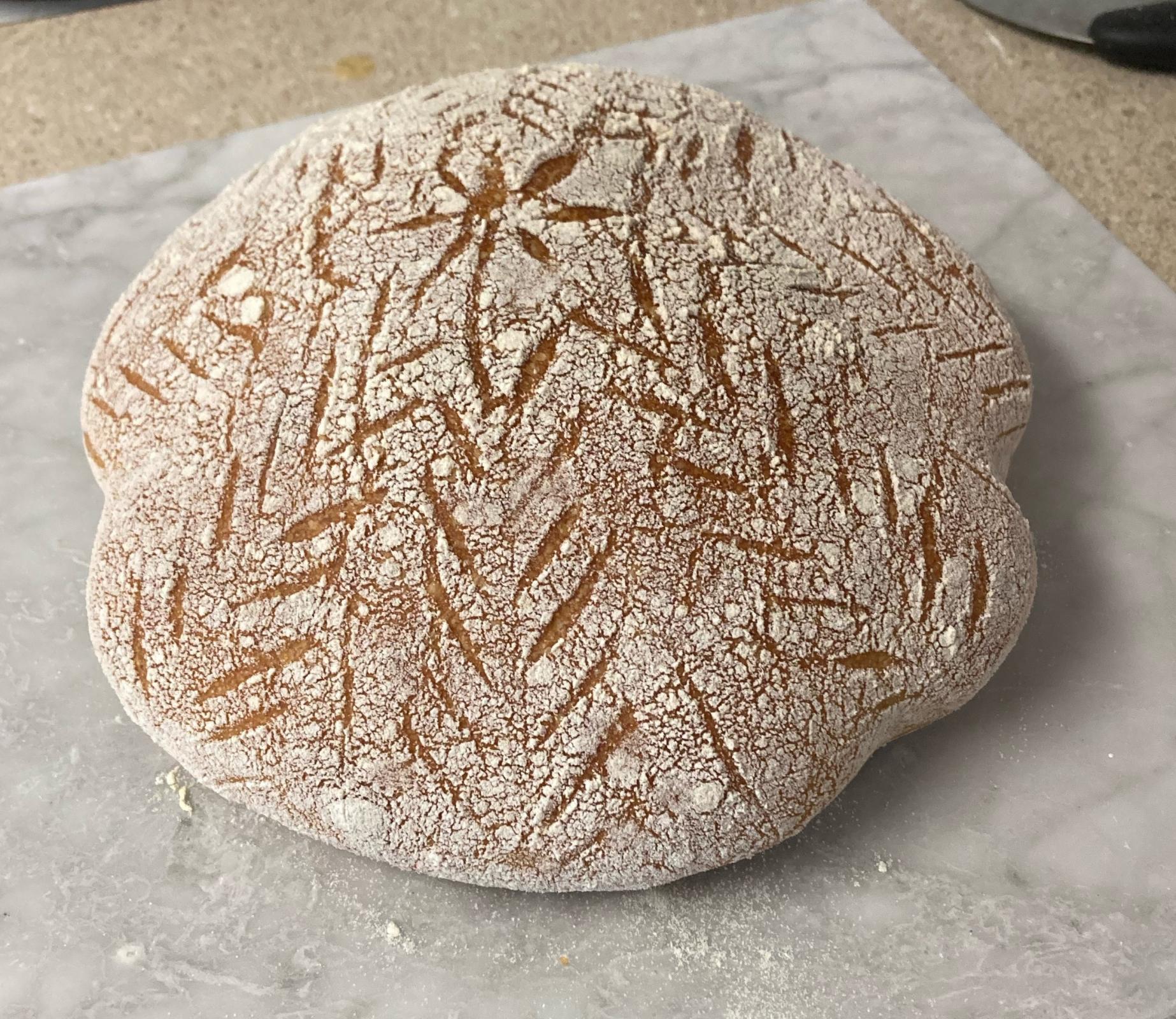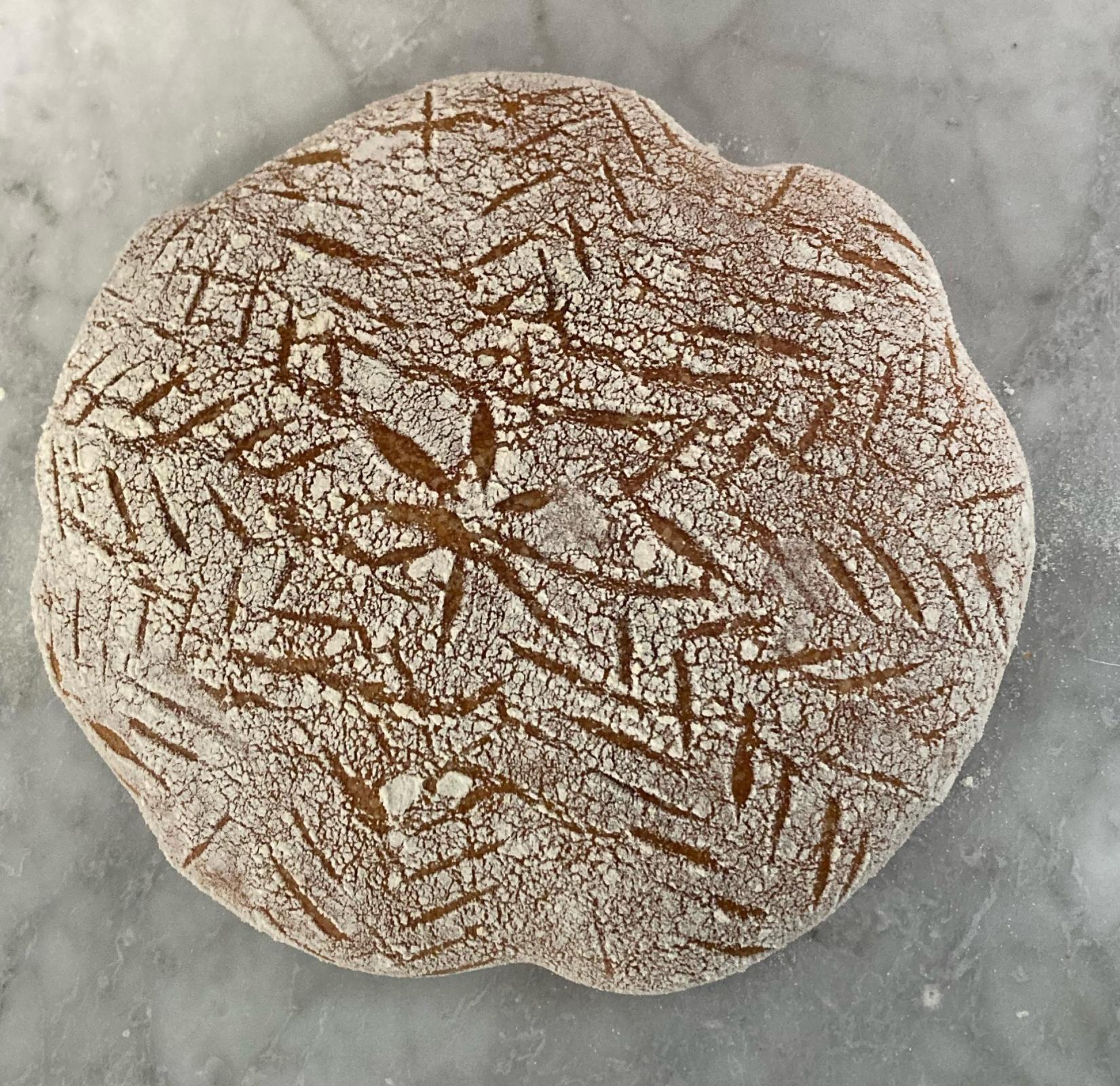Hi all! I'm a long-time lurker and first-time poster!
Normally I don't have many issues with producing happy, tall sourdough loaves at room temp, but my first time with a cold final proof resulted in a pretty flat loaf with big holes at the top.
I used an 80% hydration dough with a 2 hour autolyse, 4.5 hour long bulk (4 coil folds), pre-shape/shape, 20 minute proof at room temp (all at 75F), and 12 hours in the fridge. Baked straight from the fridge (didn't see any rise) in a preheated dutch oven at 500F for 20 minutes, then finished off at 475F for another 20.
Is this a case of under or over proofing? How can I avoid this next time? Love the flexibility that the fridge might be able to provide, but I want the oven spring I'm used to! Would appreciate any advice.



I like the shape of your boule... Not the height but the undulations in the roundness of it. Is that intentional and how do you achieve that shape?
Also, I have very little experience cold proofing, so I can't really advise on how to fix your problem, but my understanding is that big bubbles at the top are a sign of overproofing. The strengthof the gluten broke down and air pockets started traveling upwards, combining as they went.
Thank you! Not especially intentional, but the result of excess parchment in the dutch oven creating creases in the final loaf. Have used butcher's twine tied around the loaf to get a similar effect though.
I had a similar thought about overproofing, but expected more rise in the banneton for that to have been the case...
I'll l leave the bread help to others, but will comment on the flexibility cold can provide. It's great isn't it - real handy. But, you can get the same flexibility by other means.
I used to do the fridge thing, still do in an emergency, but gave it up a while back. If you know your starter you can adjust amounts to get all kinds of flexibility,
Eh, the bread, might as well. Save for the big bubbles I guess you'd call them, "fermenting" and "proofing" seem to be ok. It appears to be s thick crust, very thick. Of course I always find it difficult to really tell in a pic (2d doesn't cut it). I think the only problem was baking a cold dough. Enjoy!
Yep, super thick crust. Love a good crust but this was definitely on the thick side... might just have to go back to baking from room temp!
Tried it a couple times, didn't like it. I'll bake from a cold oven, that's about it. Enjoy!
interested to learn about cold vs hot oven... right now I use a pre-heated dutch oven in a hot oven (240c), covered 20 min uncovered 20 min at 230c (for 550g flour total) - gives good rise and a crust that's a bit thicker than I'd like. if you start from a cold oven what's the difference? tx
Unfortunately I don't remember. I've done it, but that was a while back, and since I didn't notice much if any changes (if there was a big difference for the good, I'd still do it), I didn't bother again. Just took longer, naturally. Enjoy!
I tried baking with a cold oven once and had good results. Here is my blog post about that bake:
http://www.thefreshloaf.com/node/56975/100-ww-cooperative-baking-franbaker
would be just to let the dough chill in the dough bowl and gently shape before baking after the retard, especially with 80% hydration. Gives the chance to pop any large gas pockets and stretch the skin. A short proof, then bake.
If you built well the structure of this dough, then the over proofing might have been the issue.
Do you notice how you have a bunch of bigger alveoli on top of your bread? This is usually a sign of overproofing. Gas tries to escape the gluten structure and it goes up. It accumulates on top of the loaf just under the crust by merging with other gas bubbles.